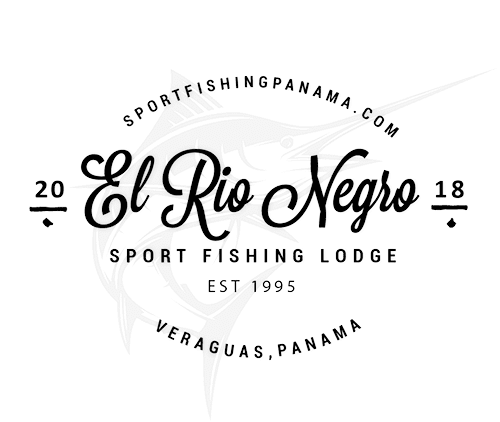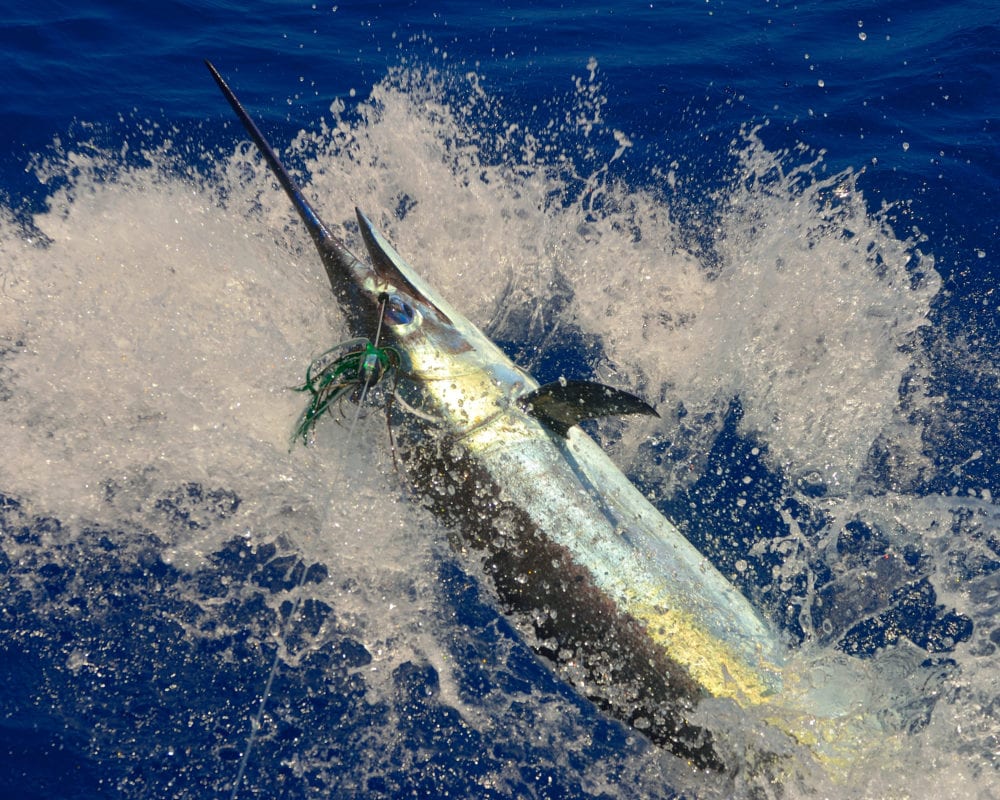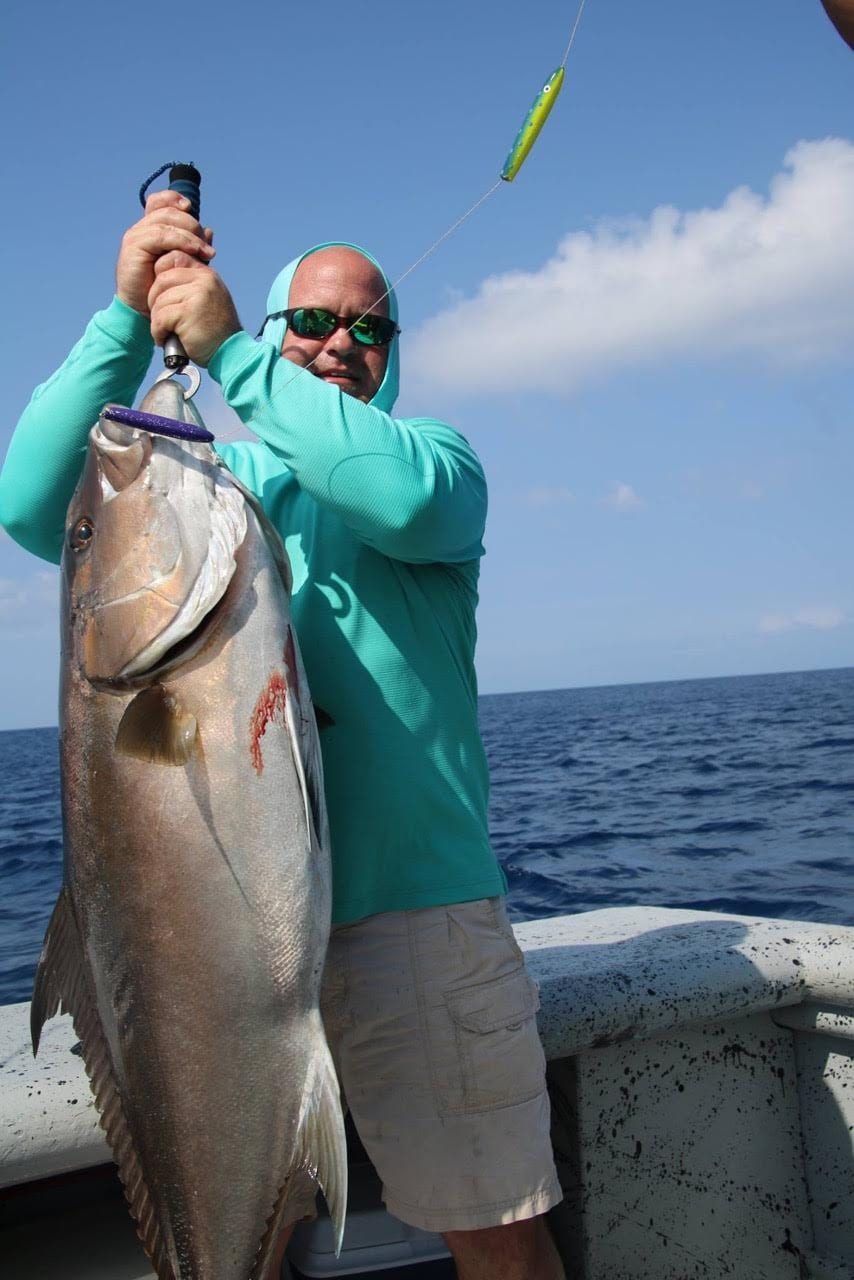 Deep Sea Trolling Techniques on the Tuna Coast
Deep Sea Trolling Techniques on the Tuna Coast
This technique puts the angler in direct confrontation with the fish, wits against cunning, intelligence against instinct. It is a simple technique to perform, but a far more challenging one to plan and execute. The rewards in thrills, excitement, and quality of catch cannot be beat.
However, trolling does take some special tackle and technique. There are also some very specific skills you will want to learn about. Like, how to reel, how to move your lure, and how to place your spread. Trusting in an experienced captain and crew to help you is probably the best solution. If you want to fish Panama or the Tuna Coast, El Rio Negro in Mariato Panama has the talented staff to make the most of your Panama charter fishing trip.
Suggested Tackle while fishing in Panama
The real fun comes from trolling techniques used with a proper spread of lures or live bait. Teasers and proper rod/reel setup are also critical to landing the trophy fish of a lifetime. The type of rod and reel you need depends on exactly what fish you are going after. There are a wide array of choices. Lengths can vary from 5.5 to 7 feet long, and most are made of carbon fiber for strength, flexibility, durability, and light weight. You will also find a difference in the butt of the rod. Straight butts are used as stand up rods, while bent butt rods are for use in a chair. Your choice of reel is also important.
We have always preferred Cal Star rods and Shimano 2 speed Tiagras or TLD models ranging from TLD 25’s to TLD 50’s. You want one with a good drag control mechanism. This will provide the right kind of resistance for running fish and to set the hook properly. Lots of line is very key and the top-shot is important as well. You don’t want to get spooled when a large trophy fish decides to go deep or sprint away from the boat. We use braided line usually eighty pound test with 120 pound mono top-shot. A stretchy monofilament line for your top shot can reduce this stress on your body and give extra stretch when a large fish strikes the bait hard and fast.
Your Choice of Lures
Most anglers will use many types of lures for trolling techniques. These range from belly bait to what we call plastic plugs and daisy chains, each with its own benefits. It doesn’t hurt to have a wide choice of each kind with you in your tackle box pre rigged, because if you are having bad luck with one lure, you never know if one of the others might just do the trick. Color can be as important as shape, especially in different weather conditions. Keep a good selection of those as well.
Probably the most common is the skirted lure. It usually has a removable skirt behind a head and along the hook. This makes it easy to change colors or patterns depending on weather and water conditions.
Our top Lures we use for the Tuna Coast
- DUO Japan Fangbait series
- Moldcraft chugger daisy chain
- Metal Jet heads with feathers
- Cedar plug daisy chains
- Rapala deep diver series CD14
- Marlin star daisy chain
- Wahoo bomber daisy chain
- Black bart chugger series
- Noggins big slant inverted chugger
- Cut bonito belly bait*
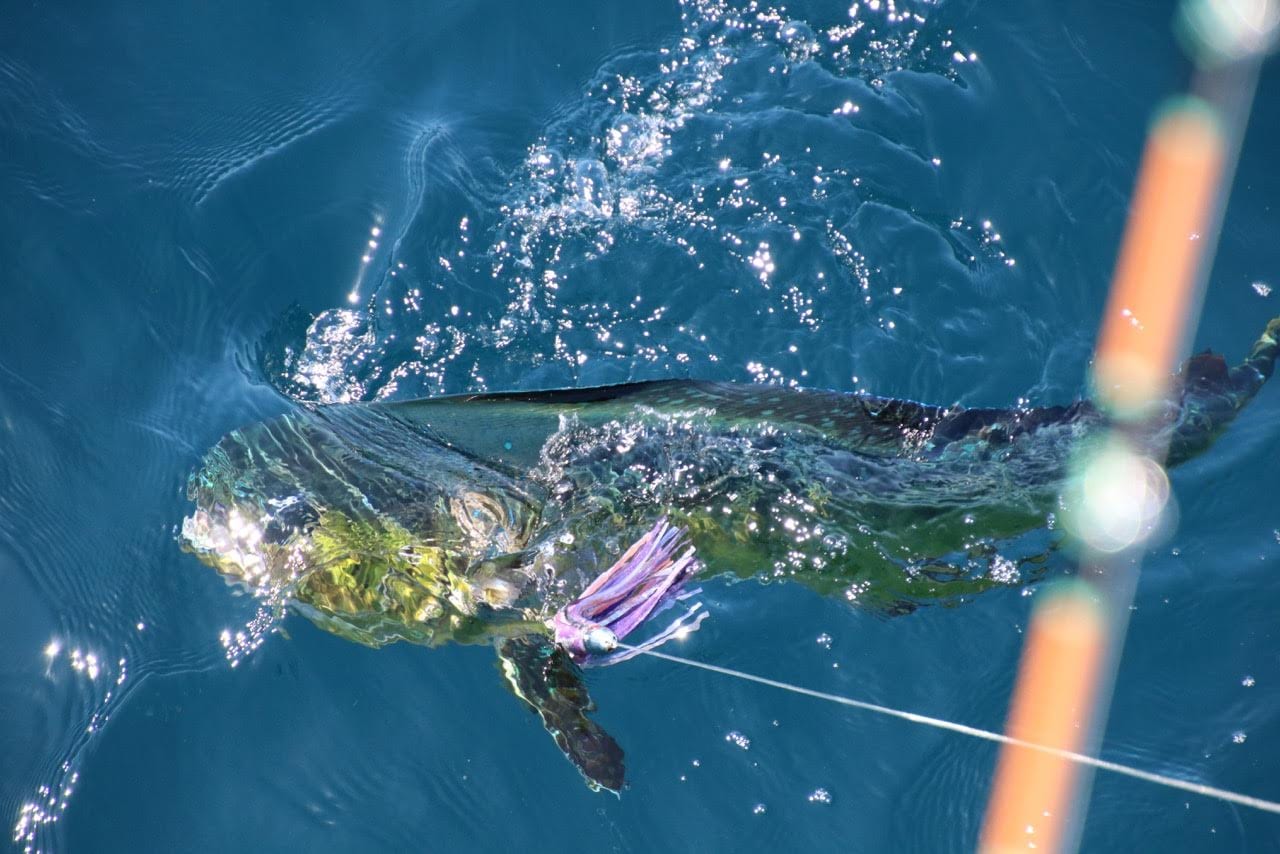 Lure Launching Tips and Tricks
Lure Launching Tips and Tricks
When putting your lure out, there are a few important things to remember. For one, deep water fish out in the open ocean are usually far less timid than those closer in to shore. These fish are not as intimidated by the boat. Even sometimes they are attracted to the churning of the motor. They might even trail the boat close astern.
A good skipper knows this trolling techniques and will recommend keeping lures along the front face of the stern wave when running lures from the outriggers of the boat. Our typical trolling spread consists of five lines. One on each outrigger, one on port side rod holder, one on starboard side rod holder and one in the centre. Make sure the three lines being pulled from the boat (not outriggers) are staggered so that they do not get tangled when making a turn.
How to Troll
On the open ocean, most will use trolling techniques like, troll depending on the speed or size of the fish you are targeting. Mackerel, football tuna and smaller fish will strike a lure at 4 to 6 knots. When looking for larger open water fish, like wahoo, we will troll anywhere from 6 to 10 knots. If you are going after Panama big game fish, like marlin or swordfish, 10 knots may be necessary to attract those.
Deep water fish like to strike near the surface, as that is generally where their natural prey tend to school. Keep the lure just a few feet under the water, unless the lure being used is specifically meant to skim the surface or dive to depths. A skirted lure or chugger should come up to break the surface from time to time. The motion and splash will help attract your targets.
bait fish If in your area are schooling at lower depths, you will need a lure like a DUO fang bait or deep diver that can dive to a depth in order to get in among the baitfish. There are trolling sinkers you can use as well, but if the boat is moving at higher speeds, that can become less effective if the sinker is not heavy enough. This is where having a deep diving plug in your tackle box can be to your advantage. You can also add a trolling weight in front of a deep diver to get it to an even deeper depth.
For really deep Panama sport fish, especially when trolling at more than 5 or 6 knots, large angling boats will use a down rigger. This setup is more complex, requiring a crane-like attachment to the stern of the boat and a large, lead ball on a deep line. Then, the trolling line is attached to the down rigger with a quick release latch.
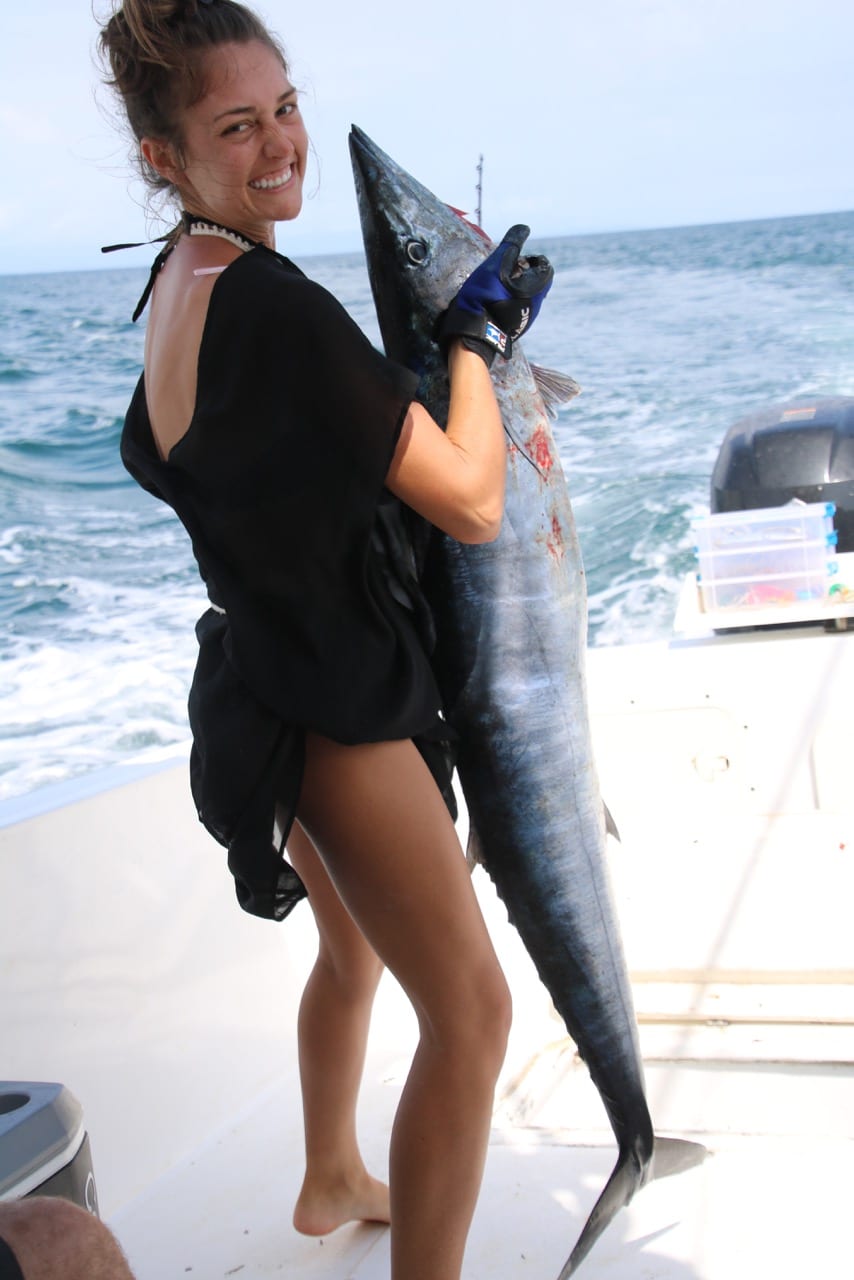 Other Secrets
Other Secrets
There are a couple of things you can do to increase your chances of a good strike. Your prey are out there looking for prey of their own. Mimicking the noise and clatter of a shoal of baitfish is the goal. A bird teaser can help, simulating the disturbance of a school of fish feeding at the water’s surface. Another trick is using a dead bonito belly bait or a dead ballyhoo. Daisy chains, spreader bars, and dredges can also accomplish this. Remember, you are trying to simulate the natural conditions that bring these big, tasty predator fish up to feed.
There is also the simple trick of putting out more than three lines with the use of out riggers. Not only does it increase your chances with basic math, but it also allows you to try more than one type of lure at the same time. Anglers can never be sure what techniques might be successful on any given day. Increasing your numbers and your diversity of lures is always a great way to maximise your success.
There are many ways to fish Panama. Our experts at El Rio Negro can help you make the most of that experience, no matter what trolling techniques or how complex a rig you want to try. With a little guidance and the right tackle, anglers will have a lot of fun and excitement. You can have the experience of a lifetime and bring home a tasty catch as well.
